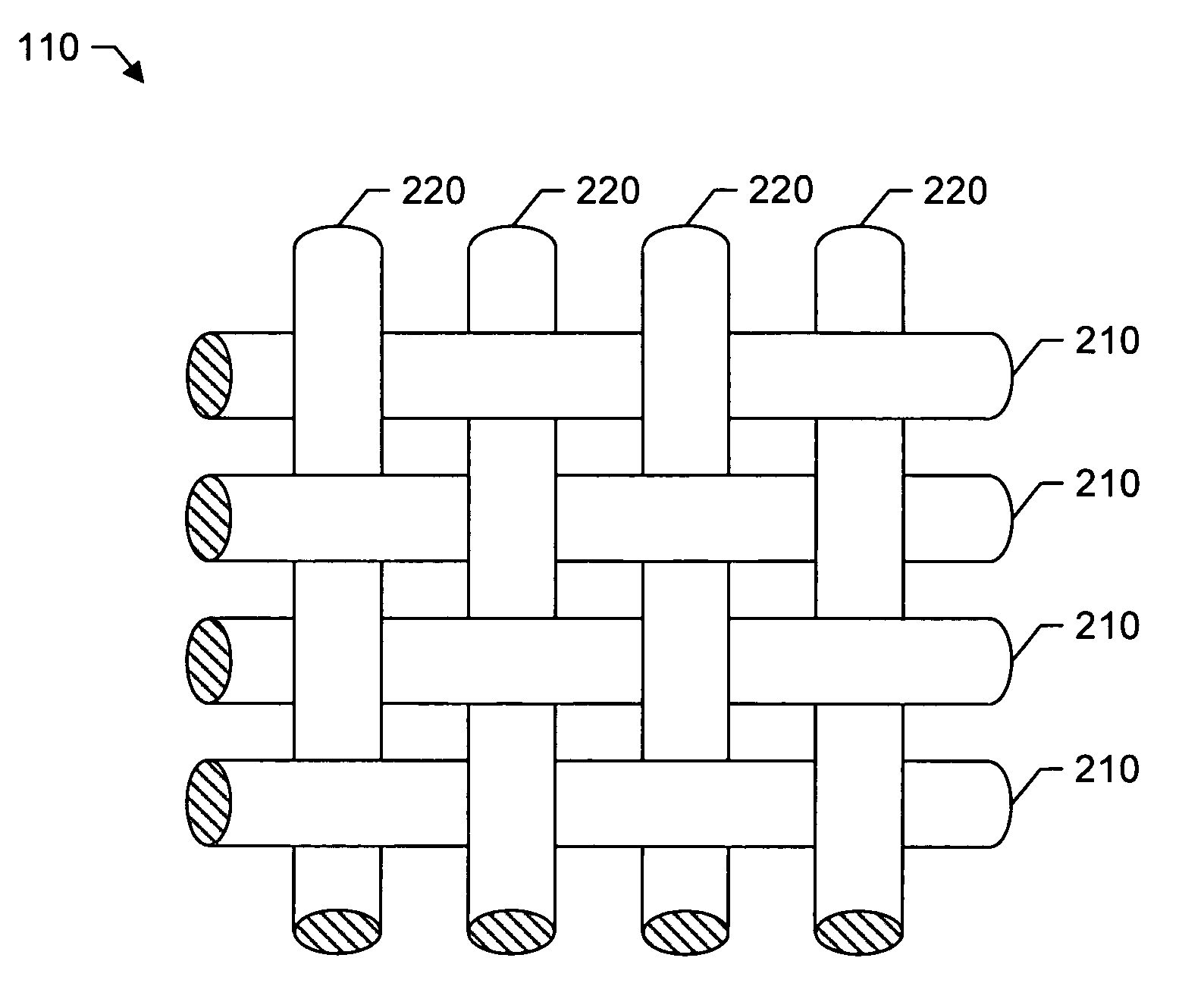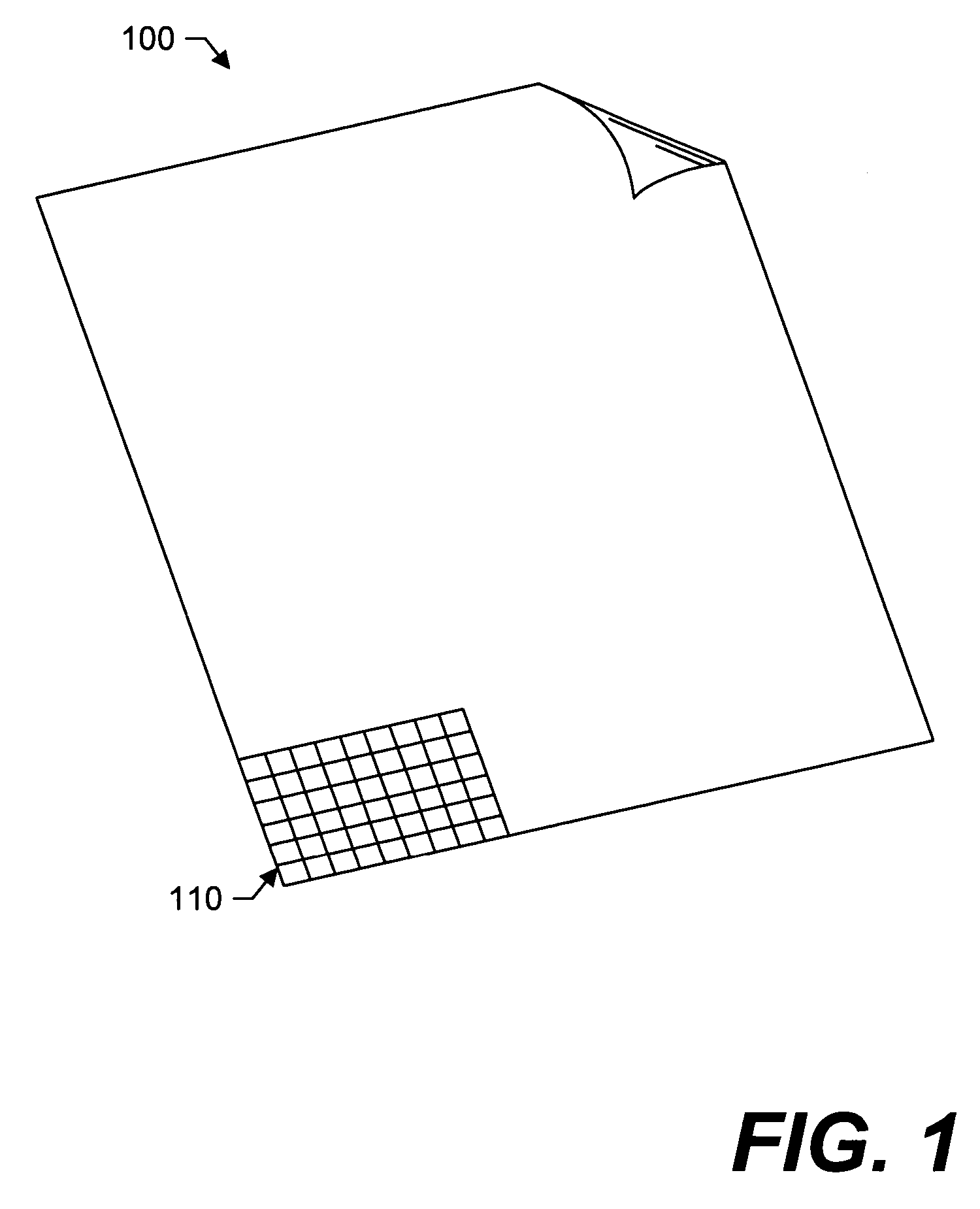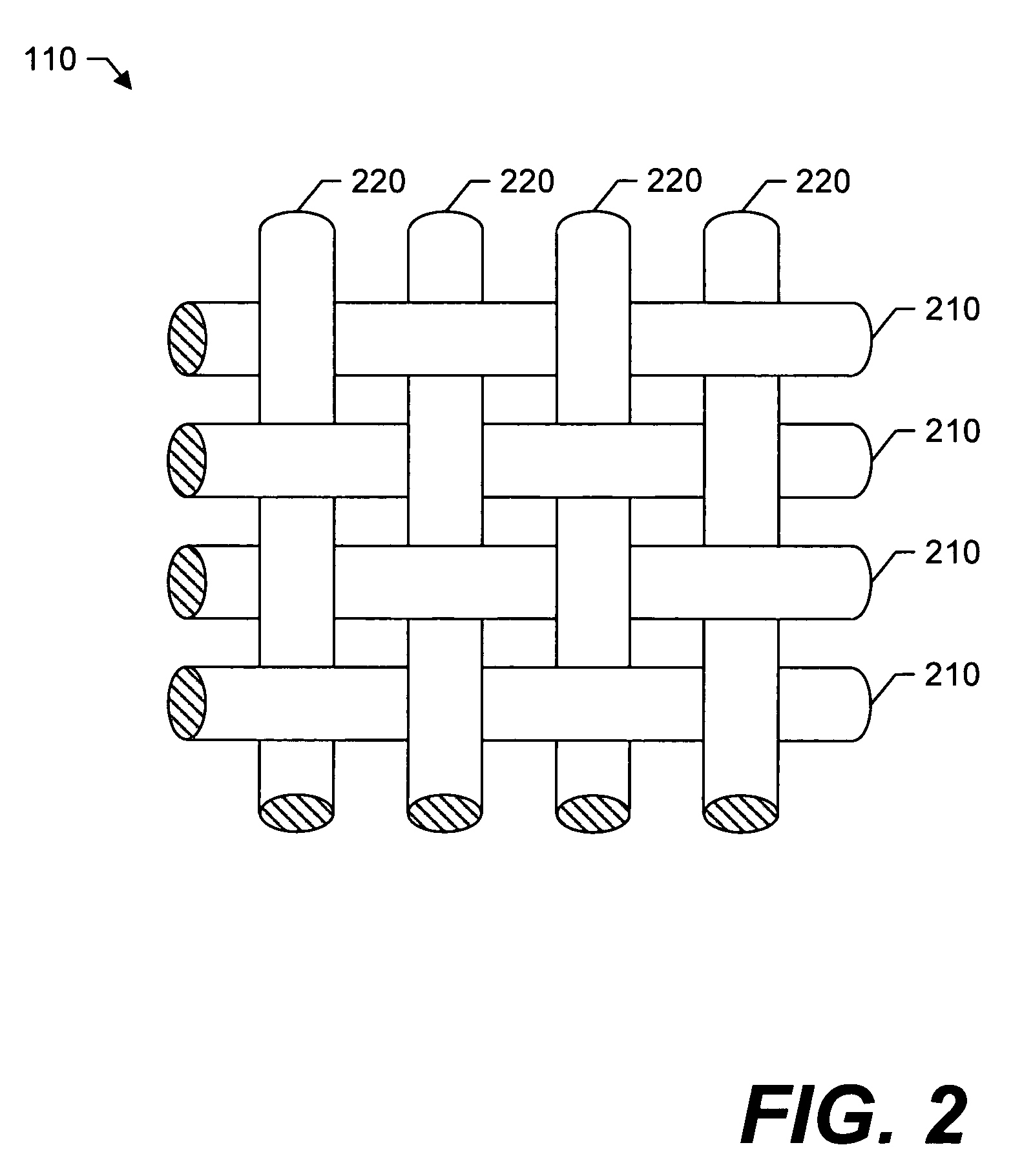Polyester woven fabric sheeting
a woven fabric and polymer technology, applied in the field of woven fabric sheeting, can solve the problems of increasing the cost of woven fabric, the average use period of cotton sheeting, and the wear and tear of most sheeting materials used in institutions, so as to achieve the effect of improving moisture absorption and desirable breaking strength
- Summary
- Abstract
- Description
- Claims
- Application Information
AI Technical Summary
Benefits of technology
Problems solved by technology
Method used
Image
Examples
Embodiment Construction
[0025] Referring now to the drawings, in which like numerals represent like components or steps throughout the several views, FIG. 1 displays a perspective view of a polyester woven fabric in accordance with an exemplary embodiment of the present invention, having one corner thereof folded over and an enlarged corner-section 110 illustrating the woven polyester yarns therein. The woven sheeting material 100 may be specifically adapted for institutional use in linens (also referred to herein as “sheeting”) such as, but not limited to, sheets, towels, pillow cases, blankets, and other related items. As illustrated in the enlarged corner-section 110, the woven sheeting material 100 comprises a plurality of warp yarns extending substantially parallel in one direction and a plurality of weft yarns extending substantially parallel in a second direction, where each warp yarn and weft yarn are substantially perpendicular to each other.
[0026]FIGS. 2 and 3 display a fragmentary plan view and...
PUM
| Property | Measurement | Unit |
|---|---|---|
| Fraction | aaaaa | aaaaa |
| Time | aaaaa | aaaaa |
| Time | aaaaa | aaaaa |
Abstract
Description
Claims
Application Information
 Login to View More
Login to View More - R&D
- Intellectual Property
- Life Sciences
- Materials
- Tech Scout
- Unparalleled Data Quality
- Higher Quality Content
- 60% Fewer Hallucinations
Browse by: Latest US Patents, China's latest patents, Technical Efficacy Thesaurus, Application Domain, Technology Topic, Popular Technical Reports.
© 2025 PatSnap. All rights reserved.Legal|Privacy policy|Modern Slavery Act Transparency Statement|Sitemap|About US| Contact US: help@patsnap.com



